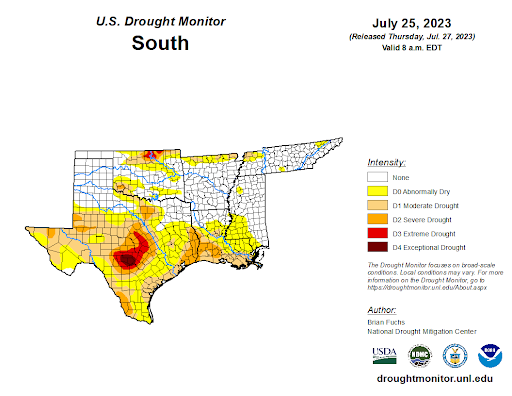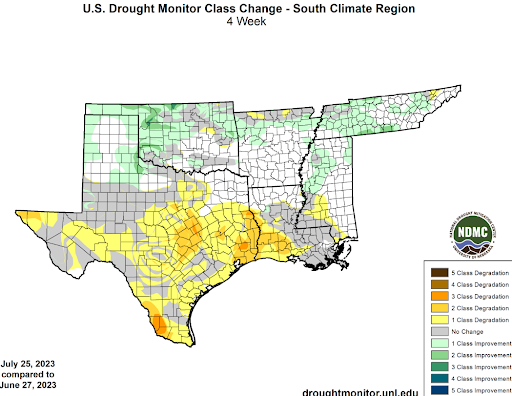July 2023
Significant Weather Events:
July saw some extreme weather in the form of extreme heat across the entire globe and in the southern climate region. Prolonged heatwaves, driven by upper-level ridges, resulted in surface high-pressure systems sitting over areas in or near the region for almost the entirety of the month. Extreme heat and heat-related illnesses are the number one cause of death among all weather phenomena. This summer, in the state of Texas alone, more than a dozen heat-related deaths have occurred, and with forecasted highs still in the 100s, this number is likely to climb. Not only has this prolonged excessive heat impacted the human body, but it has also affected many crop yields across the southern region. This past month's extreme heat is said to have already burned through many farmers' margin for error; even cotton plants, which typically thrive in the heat, have been affected. During the beginning of July, corn and soybean yields were only expected to be off by about 3 to 5 percent, but after this estimation, several very dry weeks followed, and by the end of the month, conditions were especially abnormally dry. On the other hand, a seasonable amount of rainfall and seasonable temperatures this July allowed for some agricultural improvements in Tennessee. During the last week of July, the Tennessee Field Office reported that 63% of cotton and 60% of soybeans were in good condition.
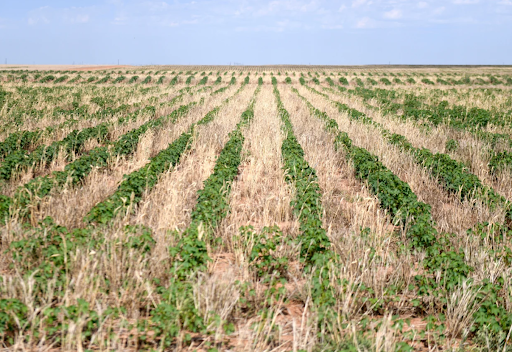
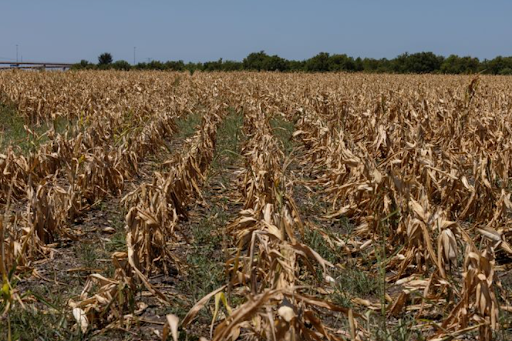
Temperature:
Overall, temperatures were above or near normal for much of the Southern Region in July. The largest departures from normal were observed in far West Texas, averaging 5-7 degrees Fahrenheit above normal, and in Oklahoma, where temperatures averaged 0-2 degrees below normal for the month of July. Looking back, the majority of the climate region experienced many days of excessive heat warnings and heat advisories, and in Texas, this was an almost daily occurrence. The remarkable heat of this July can be best exemplified by looking at consecutive days over 100 degrees in El Paso, TX. This new record-long streak of 44 days lasted from July 16th to July 29th, with daily high temperatures reaching as high as 111 degrees Fahrenheit in mid-July. The daily average temperatures for the month exceeded 90 degrees Fahrenheit in South Texas, with the majority of the southern region experiencing daily average temperatures between 88 and 78 degrees. Some of the coldest daily average temperatures were found in the Great Smoky Mountains of Eastern Tennessee, where average temperatures were as low as 68 degrees Fahrenheit.
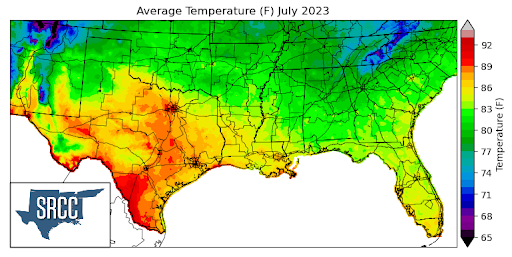
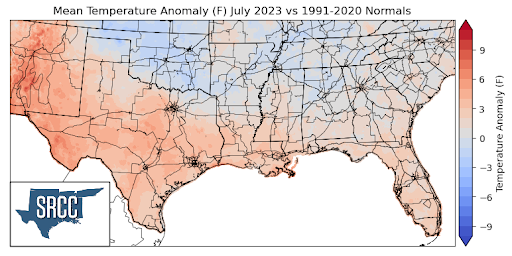
Precipitation:
Looking across the southern region for the month of July, most areas received less precipitation than normal or near-normal precipitation amounts. The largest departures from normal were seen in West, Central, and South Texas, where precipitation anomalies were 100 percent below normal. Some of the greatest positive anomalies were observed in regions of Western Oklahoma, where precipitation anomalies were about 150 percent above normal. Rainfall was relatively widespread throughout the region, with accumulated precipitation averaging about 3.0 inches for the month of July across the entire region. However, several areas received much more than this, such as Kemper County in East Central Mississippi, where precipitation accumulation for the month reached as much as 15.0 inches. Unfortunately, though, the areas that stayed particularly dry in the month of July were areas already experiencing enhanced drought conditions, leading to the worsening of drought conditions in areas such as central Texas.
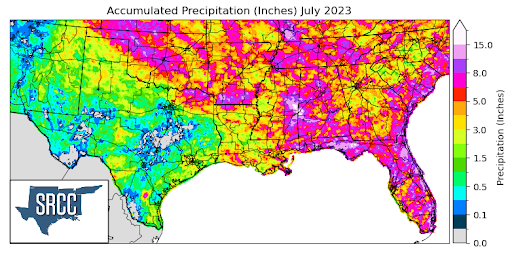
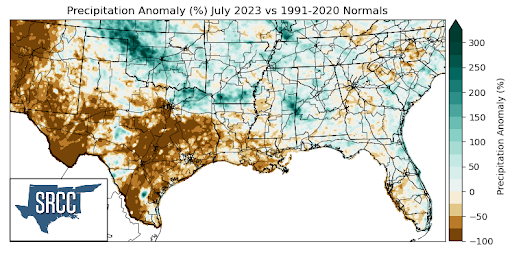
Drought:
While drought intensity has improved for the Panhandle region, Oklahoma, and Tennessee, exceptionally dry conditions in the Southern states of the climate region have led to a worsening of drought conditions among those states in the month of July. At the beginning of the month, 63% of the region was experiencing varying levels of drought severity. However, as of July 25th, that number has decreased to 58%. Although the land area of drought has slightly decreased, with only 31% of the region currently experiencing D1-D4 drought conditions compared to 20% at the beginning of the month, drought has expanded in terms of coverage.
Western Oklahoma has seen a significant improvement in drought conditions, thanks to many evening pop-up showers/thunderstorms this July. This has resulted in a two-class improvement in drought conditions for that area. Conversely, dry conditions in Texas and Louisiana have led to a two-class degradation in areas across both states. Exceptional heat and prolonged dryness have led to several areas experiencing three-class degradations, located in South, Central, and West Texas. As hot and dry conditions are expected to continue throughout August, the Climate Prediction Center has identified areas of Texas and Central Louisiana as being at "rapid onset drought risk."
